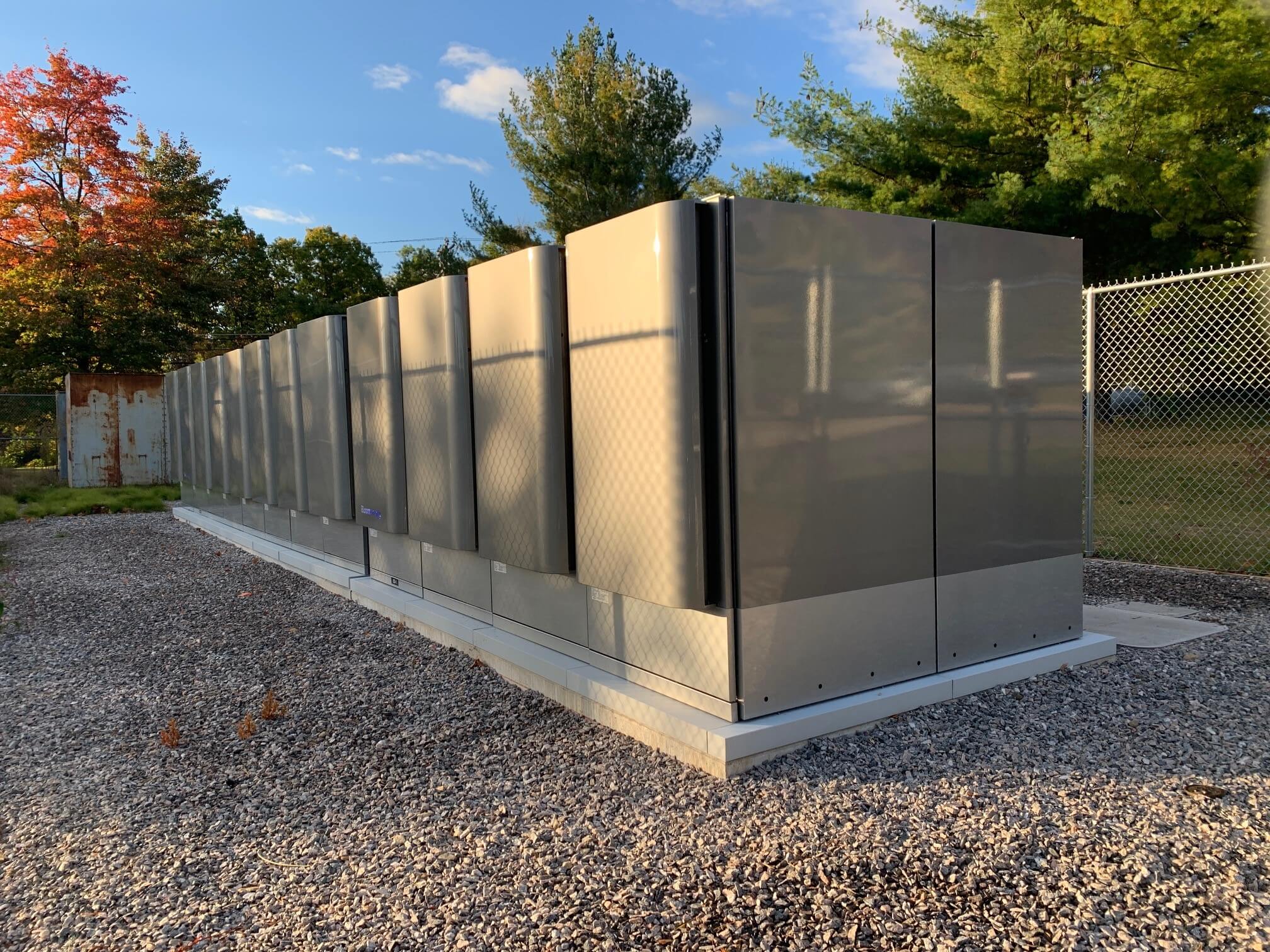<< Back
New, Energy-Efficient Fuel Cells Come Online at CHH

October 16, 2020
With the support of Hartford HealthCare, Charlotte Hungerford Hospital (CHH) has taken significant steps in energy efficiency with the recent installation of new, advanced fuel-cell energy technology on its 144-acre campus in Torrington.
The project included the installation of Bloom Energy Servers, which use solid-oxide fuel cell technology to provide on-site, combustion-free electric power that is clean and reliable. The system has a natural-gas pipeline system designed to survive extreme weather. It had been planned for over a year and came online this summer.
“Charlotte Hungerford is so pleased to begin utilizing this safe, efficient technology that will help reduce our environmental footprint and allow us to better manage our financial resources,” said John J. Capobianco, HHC Regional Vice President for Operations at Charlotte Hungerford Hospital. “We anticipate that implementing the new system will provide us with a cost savings of over $200,000 annually. I’d like to recognize Regional Director of Facilities Director George Teri-Savage and CHH electrician John Hudson for all of their work bringing this project to fruition.”
The 750-kilowatt installation produces electricity without combustion using a highly efficient, electrochemical process, which helps the hospital to reduce its carbon footprint with lower carbon dioxide emissions than the electricity it would otherwise receive from the local electric grid. Charlotte Hungerford Hospital can expect to reduce over 550 metric tons of carbon dioxide annually by adding this fuel cell technology at its care center.
There are also air quality benefits, with smog-forming pollution and particulate matter expected to be reduced by over 99 percent compared to existing combustion-based power generation sources.
Bridge Energy Services assisted with the planning and logistics of adding the cell to the Torrington campus. The hospital plans to continue its investment in the technology, with a goal of creating its own localized microgrid that is always on – operating alongside the main grid, then independently during a power outage.
Having a microgrid in a healthcare facility enables the lights to stay on and the hospital operational, continuing to serve patients, in the event of an outage.
“Hospitals and healthcare networks are the standard-bearers of health and well-being in their communities,” said Dan Middleton, SVP of Americas, Bloom Energy. “Charlotte Hungerford Hospital and Hartford HealthCare are demonstrating the importance of sustainability and air quality for patients and the community through their energy strategy.”